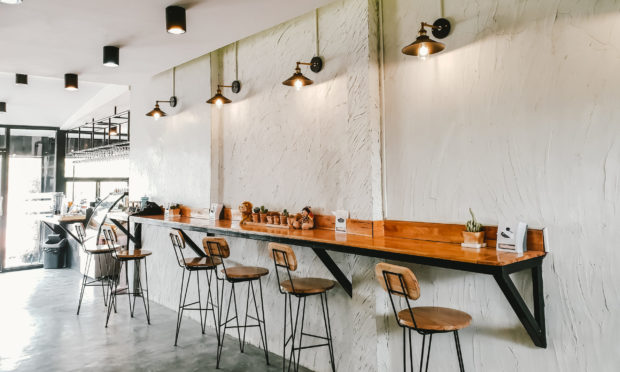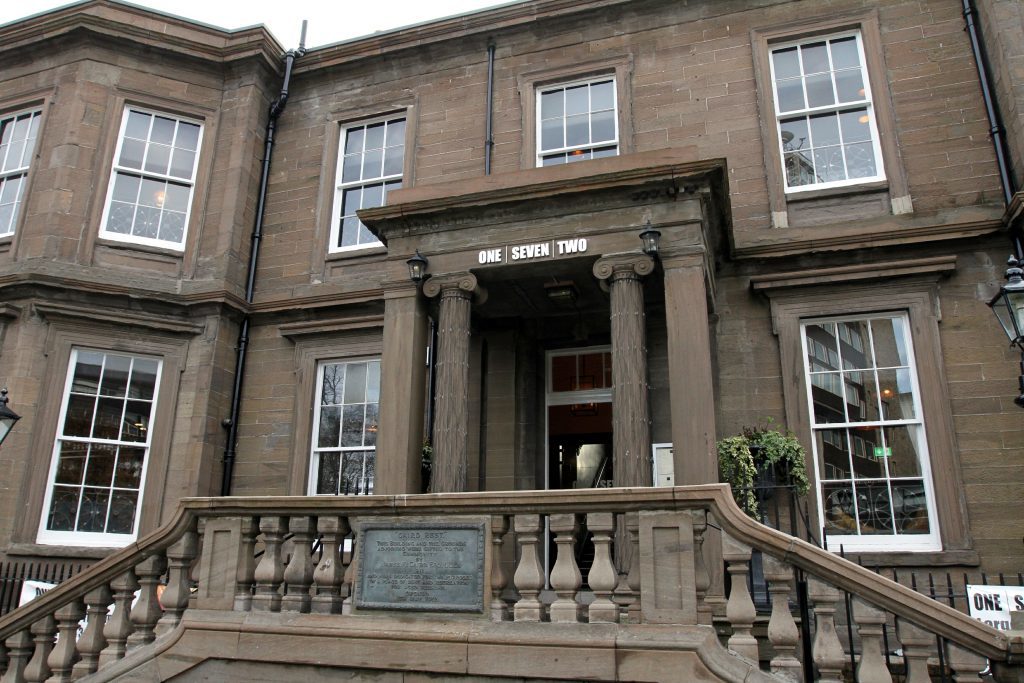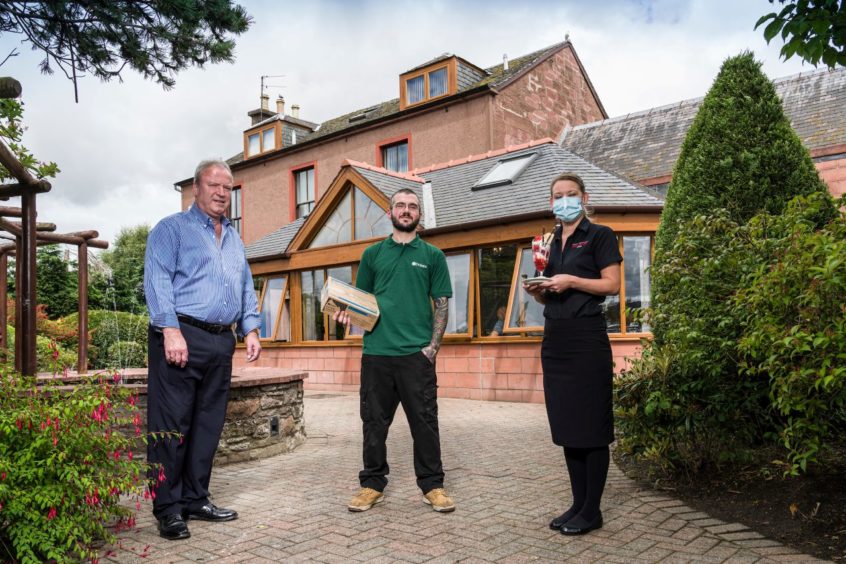Readers and businesses share their views on whether the Chancellor’s 50% Monday to Wednesday meal discount will provide the much-needed boost hospitality firms are looking for.
Traditionally the earlier weekdays have been quieter for restaurants with only really the business lunch crowd and a few stragglers to cater for.
But that may be about to change, at least in August, with the Chancellor’s £10 meal discount now active for all diners across the UK who can use it Monday to Wednesday as many times as they like.
The idea behind Rishi Sunak’s ‘Eat Out to Help Out’ scheme, under which diners are entitled to a 50% discount on sit-in meals up to the value of £10, is to give restaurants, bars and cafes a much-needed shot in the arm following the coronavirus lockdown. It also aims to entice customers to eat out on those early weekdays to make up for the loss of office workers, many of whom are still home-based.
But will it work? Among those commenting on The Courier’s Facebook page, there were conflicting views.
Craig Chalmers said the Chancellor “should have put this money to the people who cannot afford to eat out not to those who can.”
But Shirley Robertson disagreed: “Nothing wrong with those who have worked hard all the way through this going out for a meal.”
But there appeared to be some confusion over how often the discount could be used – with the answer being as many times as you like, Monday to Wednesday in August, per person, per sitting.
On Twitter, Eric Allan said, “So far I’ve not seen one restaurant advertising this,” though a large number of restaurants, cafes, bars and other businesses which offer sit-in food are participating, and all diners are automatically eligible for the discount.
Participating businesses must register to take part in the scheme, and by midnight on July 26, HMRC reported that over 50,000 had done so.
Webinars were organised to explain the scheme to businesses, including how to process the discount which is part of an overall package of measures to support the hospitality industry, including a 15% drop in VAT from 20% to 5% until January 12.
But with an absence of office workers and tourists in city centres, some business owners are questioning whether there will be enough footfall to justify opening Monday to Wednesday.
Martin Tippett, director at 172 at The Caird in Dundee, fears there is just not the volume of trade to make opening for indoor dining earlier in the week worthwhile at this point in time.
He said: “I’ve got to look at costs and ask is there enough footfall for me to open Monday, Tuesday, Wednesday which would mean putting staff on, using gas and electricity… If I take in £500 by opening it might cost the same amount just to open the doors.
“I’ve spoken to other city centre owners and they say they’re ticking over with business during the week but, with the discount, unless they get that money from HMRC back into their bank account quickly then it’s going to be difficult. So there would need to be an increase in footfall.”
For Martin, though the scheme “looks good on paper”, he believes there are multiple factors affecting business that won’t be immediately fixed by a meal discount.
He said: “A lot of customers come in [to 172 at The Caird] for lunch with a glass of prosecco, or cocktails with nibbles. This isn’t a place where people tend to have soft drinks so, although I understand why they didn’t include alcohol with the offer, it doesn’t really help us.
“To be honest it’s very, very tough right now. It’s the offices not being back, there’s no one here. We’re being hit from all angles, because we can’t offer live music, no functions or weddings, so it’s not just a case of no one standing at the bar, that’s just a small percentage, it’s the tourists, the day trippers. All these bits add up. So the [Eat Out to Help Out] scheme sounds a good idea on paper but in practice, there’s more to it.
“The average age group coming in is 18 to 22-year-olds which is good for new custom – the younger ones have no fear – but our older clientele are much more anxious and cautious and I think that’s hitting everyone, not just us.
“There’s a few bars in the West End that aren’t even open. Even if the government turned around today and said, ‘We’ve got a vaccine,’ I don’t think pubs will return to where they were for a long time. People have got into the habit of what they’ve been doing for months now and it becomes part of the DNA.”
The picture is a little more optimistic away from city centres with customers choosing to stay local. Alan Bannerman who owns The Red House Hotel in Coupar Angus along with Dalmore Inn in Blairgowrie said he believed bookings had come in on the back of the new initiative, but it remains to be seen whether they can be sustained.
He said: “The fact it applies early to midweek which can be quieter days is good. In both of my places we’ve got a number of bookings [for those days] which is encouraging but how long will it last? It might be okay for the first week but are people going to keep going out on Mondays, Tuesdays and Wednesdays?
“That said, there may be people who have been shielding who might not have had the confidence to go back out and this might be an incentive. The fact we’re trying to do everything properly so they come and see there’s plenty of space between tables, staff are wearing masks, there’s hand sanitiser available, it might give them that reassurance.”
Both venues let customers know via social media that they were taking part in the scheme and have signs to make passers-by aware, too.
Alan added: “We’ve had it on Facebook for both places and we were given signs to put up so I would say most of the bookings for Monday to Wednesday are because of the scheme.
“The main thing is they’re getting the money off food and soft drinks, and soft drinks is a big part of the business [on those days]. There’s not so many have a bottle of wine early in the week. We do a three-course steak supper at Dalmore for £27.95; all of a sudden that’s £17.95 so it’s great value if you’re going out.”
The Red House is celebrating its 40th anniversary this year, and Alan believes the business’s food offering is going to be central to its future. With this in mind he has been working with local suppliers and food service company Brakes Scotland to source high-quality produce.
He said: “We’re proud to be the last hotel still open in Coupar Angus when many others have closed over the last four decades. The Covid-19 crisis has left us trying to claw back as much turnover as we can in the last six months of this year, but without any weddings or coach party bookings taking place at the hotel.
“It’s clear that in the coming months, our food and drink offering is now going to be more important than ever, so we are keen to collaborate as much as possible with our fantastic bunch of suppliers.”












